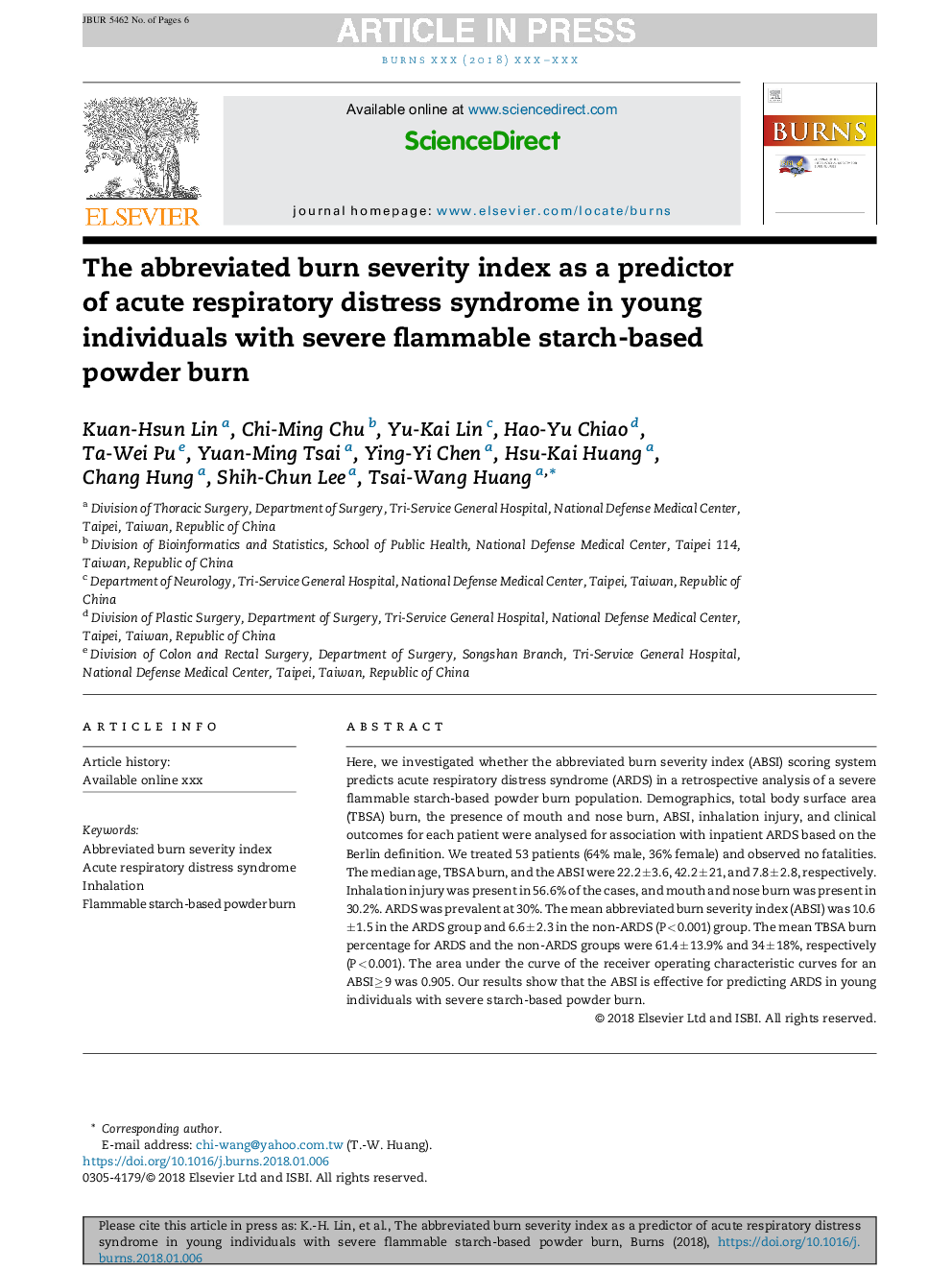| Article ID | Journal | Published Year | Pages | File Type |
|---|---|---|---|---|
| 10215884 | Burns | 2018 | 6 Pages |
Abstract
Here, we investigated whether the abbreviated burn severity index (ABSI) scoring system predicts acute respiratory distress syndrome (ARDS) in a retrospective analysis of a severe flammable starch-based powder burn population. Demographics, total body surface area (TBSA) burn, the presence of mouth and nose burn, ABSI, inhalation injury, and clinical outcomes for each patient were analysed for association with inpatient ARDS based on the Berlin definition. We treated 53 patients (64% male, 36% female) and observed no fatalities. The median age, TBSA burn, and the ABSI were 22.2 ± 3.6, 42.2 ± 21, and 7.8 ± 2.8, respectively. Inhalation injury was present in 56.6% of the cases, and mouth and nose burn was present in 30.2%. ARDS was prevalent at 30%. The mean abbreviated burn severity index (ABSI) was 10.6 ± 1.5 in the ARDS group and 6.6 ± 2.3 in the non-ARDS (P < 0.001) group. The mean TBSA burn percentage for ARDS and the non-ARDS groups were 61.4 ± 13.9% and 34 ± 18%, respectively (P < 0.001). The area under the curve of the receiver operating characteristic curves for an ABSI â¥Â 9 was 0.905. Our results show that the ABSI is effective for predicting ARDS in young individuals with severe starch-based powder burn.
Related Topics
Health Sciences
Medicine and Dentistry
Critical Care and Intensive Care Medicine
Authors
Kuan-Hsun Lin, Chi-Ming Chu, Yu-Kai Lin, Hao-Yu Chiao, Ta-Wei Pu, Yuan-Ming Tsai, Ying-Yi Chen, Hsu-Kai Huang, Chang Hung, Shih-Chun Lee, Tsai-Wang Huang,
